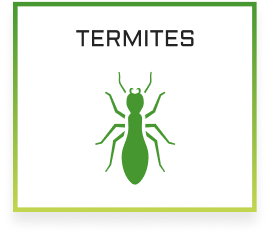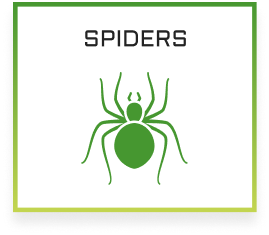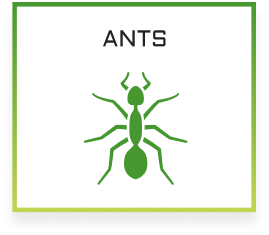The Top 5 Strategies for Effective and Eco-friendly Rat Removal in Orange County

With the increasing concern for the environment, it’s essential to find methods of pest control that are both effective and eco-friendly. In Orange County, where urban areas often intersect with natural habitats, tackling a rat problem requires careful consideration. This blog will explore the top five strategies for ensuring safe and efficient rat removal while maintaining respect for local wildlife and the ecosystem.
Understanding the Rat Problem in Orange County
The rat problem in Orange County is multifaceted, driven by a combination of urbanization and climate. As more homes are built, the natural habitats that once served as barriers for these rodents are being disrupted. This creates perfect nesting conditions for rats, leading to increased human-animal interactions. Residents often find themselves grappling with the consequences, from property damage to potential health risks.
Furthermore, rats are not just a nuisance; they can carry diseases that pose serious health threats to both humans and pets. In addition, their rapid reproduction rates mean that a small problem can quickly snowball into an overwhelming infestation. Therefore, recognizing the symptoms of a rat problem early on is key to effective rodent control. Homeowners should look for droppings, gnaw marks, or signs of nesting in attics and basements as early indicators of an infestation.
Understanding the behavior of rats also plays a crucial role in developing effective removal strategies. These animals are nocturnal, meaning they are most active at night. This behavior can make detection challenging, but proactive measures such as housing inspections can help identify vulnerable points before they lead to an infestation. Ultimately, addressing the rat problem requires a comprehensive approach that combines knowledge of their habits with effective prevention and removal strategies.
Strategy 1: Prevention Through Habitat Modification
The first step in successful rat removal in Orange County lies in prevention through habitat modification. This strategy involves altering the environment to make it less hospitable to rats. For instance, trimming overgrown vegetation, sealing gaps in fences, and removing debris can significantly reduce potential nesting areas. Additionally, ensuring that food sources are not easily accessible is vital; securing garbage bins and bird feeders can deter rats from foraging.
Moreover, homeowners should pay attention to areas of potential water accumulation, as rats are also drawn to moisture-rich environments. Fixing leaks and ensuring proper drainage can make your property less appealing. It’s important to remember that a clean environment is your best defense against unwanted pests. Regular yard maintenance and inspections for signs of rodent activity can go a long way in ensuring your property remains rodent-free.
Incorporating these changes not only contributes to effective rat removal in Orange County but also enhances the overall aesthetic and ecological health of the community. By fostering a cleaner, less inviting environment for these pests, we are simultaneously playing a part in wildlife conservation and urban sustainability.
Strategy 2: Eco-friendly Traps and Baits
When it comes to rat removal in Orange County, utilizing eco-friendly traps and baits is a pivotal strategy that aligns with sustainable practices. Traditional methods often rely on toxic chemicals that can harm not only the target species but also non-target wildlife, pets, and even humans. Eco-friendly traps provide a humane alternative, allowing for the capture and release of rodents without causing them harm.
These traps can be easily purchased or even made at home using simple materials. For baiting, using natural substances such as peanut butter or fruits can be effective, as these attract rats without the environmental risks posed by chemical-laden baits. It is crucial, however, to place traps carefully to prevent unintended captures of other animals, thereby minimizing the ecological impact.
In addition to traps, employing natural rat deterrents such as essential oils can help repel rodents effectively. Oils like peppermint and eucalyptus are known for their strong scents that rats find overwhelming. Incorporating such strategies not only aids in removal but also creates a safer living space, making rat removal in Orange County a natural and eco-friendly endeavor.
Strategy 3: Utilizing Natural Predators
Another innovative strategy for rat removal in Orange County is the use of natural predators. Encouraging native wildlife that preys on rats can be an effective and sustainable approach to controlling rodent populations. Birds of prey, such as hawks and owls, are natural hunters of rats and can serve as an essential part of rat management, especially in more rural areas.
To attract these beneficial predators, consider setting up perches or birdhouses in your yard. Moreover, maintaining a healthy habitat that supports native flora and fauna will encourage the presence of these natural rat catchers. This method not only supports pest control but also promotes biodiversity and ecological balance in the community.
However, it is vital to ensure that these natural predators are not threatened themselves by other human activities. Creating awareness within the community about the importance of preserving predator species enhances the effectiveness of this strategy while contributing to the overall health of the ecosystem.
Strategy 4: Safe Exclusion Techniques
Implementing safe exclusion techniques is an essential strategy in the holistic approach to rat removal in Orange County. These techniques focus on sealing off access points that rodents use to infiltrate homes and businesses. Common entry points include gaps in doors, windows, and the foundations of buildings. By sealing these openings with materials like steel wool or metal mesh, property owners can dramatically reduce the risk of a rat infestation.
Furthermore, it is crucial to regularly inspect these areas, as wear and tear can create new entry points. Regular maintenance, such as checking vents and utility lines, plays a significant role in proactive pest management. Additionally, educating homeowners on the significance of these exclusion techniques fosters a community-wide effort towards effective rat removal.
Not only do these methods protect your property from rats, but they also contribute to broader environmental goals by minimizing unnecessary trapping and killing of wildlife. A well-maintained home is a strong fortress against pests, enabling residents to coexist peacefully with nature.
Strategy 5: Community Awareness and Involvement
Lastly, fostering community awareness and involvement is a fundamental strategy for effective rat removal in Orange County. When residents collectively understand the importance of sustainable practices, the impact of individual actions can lead to significant changes. Community workshops and information sessions can help educate the public about eco-friendly rat control methods and encourage participation in local wildlife conservation efforts.
Involving the community in these initiatives not only helps share knowledge but also builds a sense of shared responsibility. By establishing neighborhood watch groups focused on rat activity, residents can effectively monitor and address issues promptly before they escalate to widespread infestations.
Furthermore, collaborating with local environmental organizations can enhance these efforts by providing resources and expertise necessary for successful rat management. Together, a community united by the goal of sustainable pest control can create a healthier environment for both people and wildlife in Orange County.
Embracing Sustainable Practices in Pest Control
By adopting these eco-friendly strategies, homeowners and businesses in Orange County can effectively manage rat populations without contributing to environmental harm. Each method emphasizes a balance between efficacy and sustainability, ensuring a harmonious coexistence with our natural surroundings.





